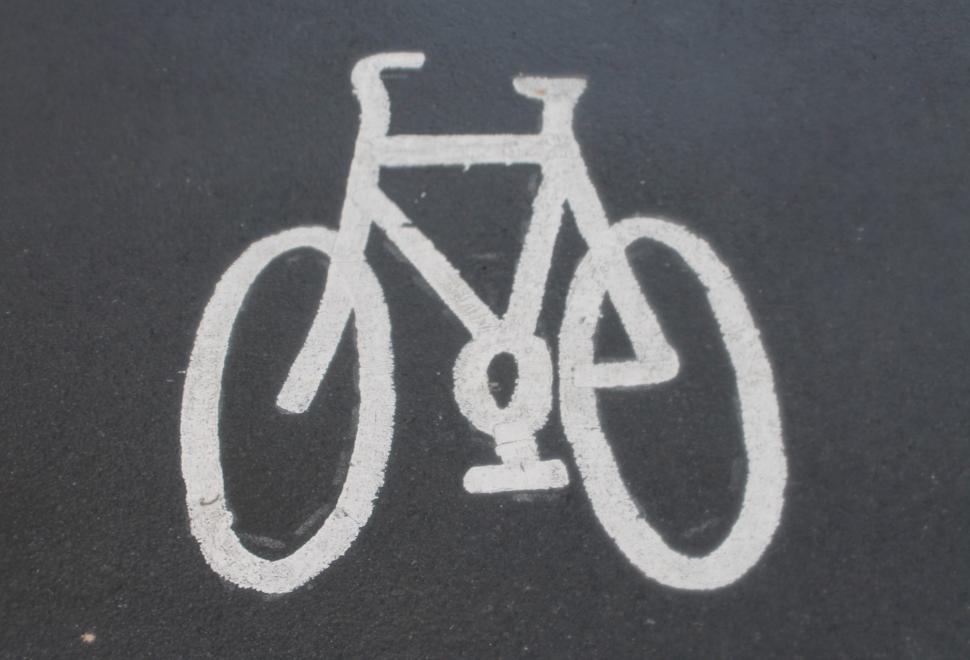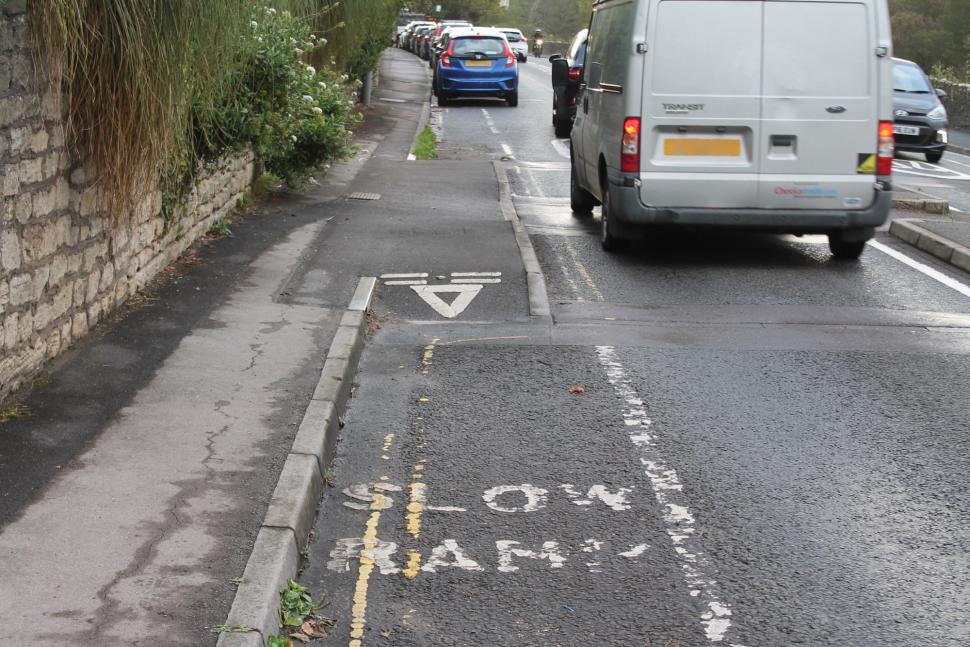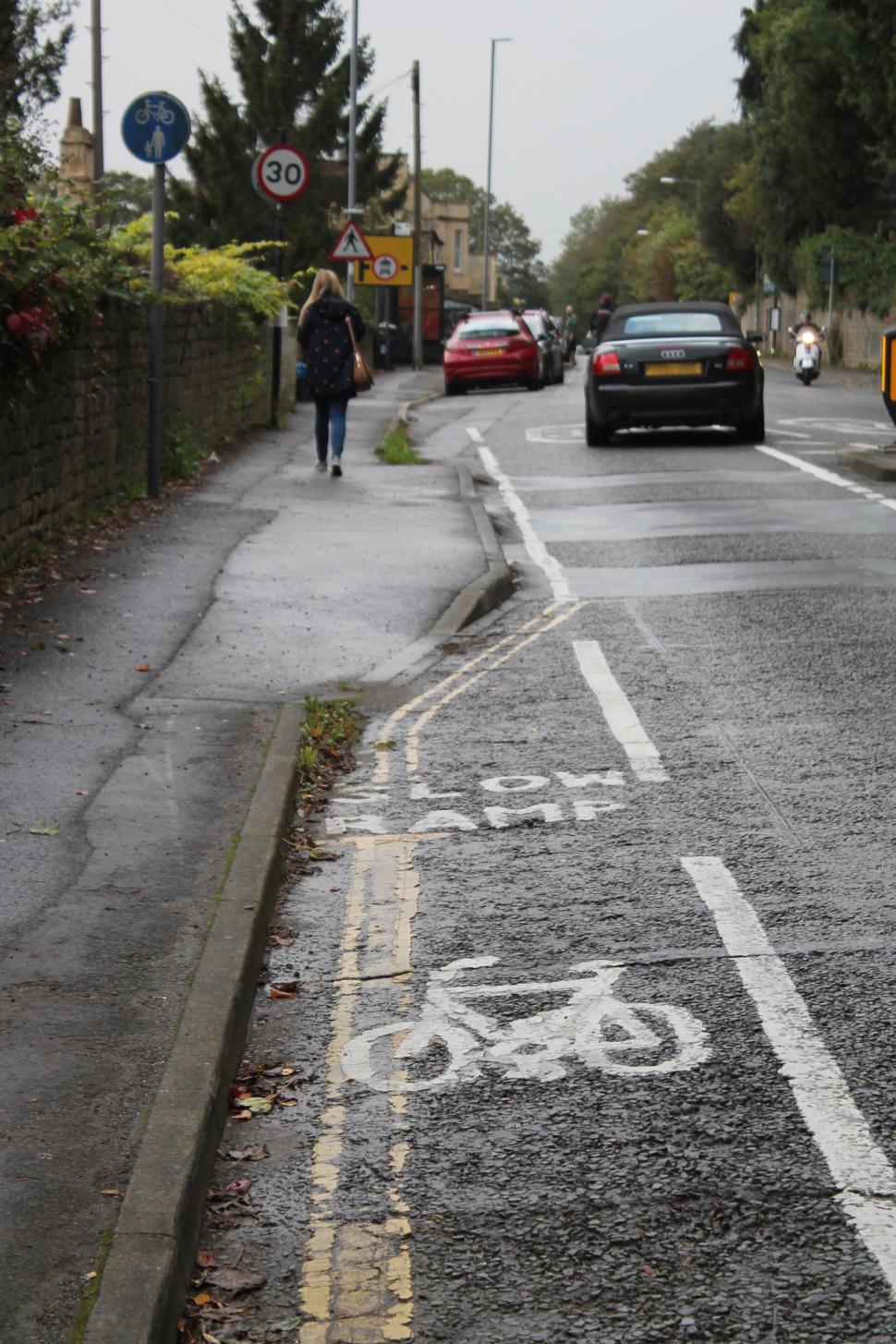- News
- Reviews
- Bikes
- Accessories
- Accessories - misc
- Computer mounts
- Bags
- Bar ends
- Bike bags & cases
- Bottle cages
- Bottles
- Cameras
- Car racks
- Child seats
- Computers
- Glasses
- GPS units
- Helmets
- Lights - front
- Lights - rear
- Lights - sets
- Locks
- Mirrors
- Mudguards
- Racks
- Pumps & CO2 inflators
- Puncture kits
- Reflectives
- Smart watches
- Stands and racks
- Trailers
- Clothing
- Components
- Bar tape & grips
- Bottom brackets
- Brake & gear cables
- Brake & STI levers
- Brake pads & spares
- Brakes
- Cassettes & freewheels
- Chains
- Chainsets & chainrings
- Derailleurs - front
- Derailleurs - rear
- Forks
- Gear levers & shifters
- Groupsets
- Handlebars & extensions
- Headsets
- Hubs
- Inner tubes
- Pedals
- Quick releases & skewers
- Saddles
- Seatposts
- Stems
- Wheels
- Tyres
- Health, fitness and nutrition
- Tools and workshop
- Miscellaneous
- Tubeless valves
- Buyers Guides
- Features
- Forum
- Recommends
- Podcast
feature
 Cycle lanes - 10.jpg
Cycle lanes - 10.jpgWhy don't cyclists use cycle lanes?
You hear it all the time, especially on internet forums: cyclists should ride in the cycle lane. You might have had motorists yelling the same thing at you out on the road, or honking their horn (breaking Rule 112 of The Highway Code) and pointing at the cycle lane. What's the truth?
Let's see what The Highway Code has to say (remember that not all of the rules in The Highway Code are legal requirements).
Here's Rule 61 of the revised Highway Code that came into force in January this year: "Cycle Routes and Other Facilities. Cycle lanes are marked by a white line (which may be broken) along the carriageway. Use facilities such as cycle lanes and tracks, advanced stop lines and toucan crossings where they make your journey safer and easier. This will depend on your experience and skills and the situation at the time. While such facilities are provided for reasons of safety, cyclists may exercise their judgement and are not obliged to use them."
That's simple enough, then. Despite what people might claim – and how hard they type USING BLOCK CAPS – The Highway Code makes it clear that cyclists aren't obliged to use cycle lanes.
Surely, though, it's better all round for cyclists to make use of cycle lanes when they are provided? It helps us cyclists by giving us our own space and it allows motor vehicles to flow more freely, right?
Well, it's not always the best option.
What if the cycle lane is full of debris that could to cause a puncture? Cycle lanes are usually positioned on the far left of the road and the camber means that everything that lands on the main carriageway eventually ends up there... grit, stones, bits that have fallen out of skips, the lot.
We're not saying it's common but we've even seen glass from a road traffic incident being swept from the middle of the carriageway on to the cycle lane and left there, as if that means it has been cleared.
Some cycle lanes are dotted with slippery drain covers because of their positioning and they can be full of obstructions like bins left out to be emptied, temporary road signs and parked cars.
Rule 140 of The Highway Code has been heavily revised in the latest version that took effect in January with the aim of affording greater protection to cyclists.
It says: "Cycle lanes and cycle tracks. Cycle lanes are shown by road markings and signs. You MUST NOT drive or park in a cycle lane marked by a solid white line during its times of operation. Do not drive or park in a cycle lane marked by a broken white line unless it is unavoidable. You MUST NOT park in any cycle lane whilst waiting restrictions apply.
"You should give way to any cyclists in a cycle lane, including when they are approaching from behind you – do not cut across them when you are turning or when you are changing lane (see Rule H3). Be prepared to stop and wait for a safe gap in the flow of cyclists before crossing the cycle lane.
"Cycle tracks are routes for cyclists that are physically protected or located away from motor traffic, other than where they cross side roads. Cycle tracks may be shared with pedestrians.
"You should give way to cyclists approaching or using the cycle track when you are turning into or out of a junction (see Rule H3). Be prepared to stop and wait for a safe gap in the flow of cyclists before crossing the cycle track, which may be used by cyclists travelling in both directions.
"Bear in mind that cyclists are not obliged to use cycle lanes or cycle tracks."
There's a distinction in The Highway Code between 'Must/Must not' instructions which are legal requirements, and 'should/should not' and 'do/do not' rules which are advisory. That means that motorists are only advised not to park in a cycle lane marked by a broken white line (which is most of them).
Even if there's just the occasional parked car, you'll need to leave the cycle lane and perhaps move back into traffic that's travelling at a faster speed. You might feel safer staying out of the cycle lane completely.
Another reason for not using a cycle lane on the left of the road is that it isn't always convenient if you're soon going to turn right or need to be in the right lane. Staying in the cycle lane might leave you needing to cross multiple lanes of traffic.
You might also sometimes find traffic turning left across your path without noticing you. The risk of getting sideswiped is one of the most common objections to using some cycle lanes.
A recent study published in the journal Accident Analysis and Prevention found that, far from protecting cyclists, painted cycle lanes are likely to result in closer passes from motorists. If you've had similar experiences, you're perfectly entitled to skip the cycle lane.
There's also the fact that some cycle lanes are simply – what's the word? – crap. They're filled with obstacles – street signs, bollards, trees and the like – they're so narrow that it's impossible to overtake, and they end abruptly.
Some cycle routes impede progress by requiring cyclists to give way to side roads frequently and even to dismount at certain junctions. It's far easier and quicker to steer clear of many.
If you use a cycle lane you'll have to rejoin the rest of the traffic at some point. This is usually straightforward enough but sometimes the junction at the far end has been poorly designed so you might want to avoid it by not taking the cycle lane in the first place.
You'll often hear complaints that cyclist don't use "perfectly good cycle paths". The issue is that a cycle path existing and a cycle path being perfectly good are two different things. They're sometimes footways that have been converted by having little blue shared-use signs added, they're full of pedestrians, they're narrow and poorly surfaced, they yield at every junction and they sometimes disappear entirely.
We've only pointed out the negative aspects of cycle lanes here, naturally, because we're explaining why cyclists don't always use them (and, of course, it's always easy to criticise). The truth is that many fulfil a purpose.
If you feel safer in a cycle lane, you think it's better for your purposes, or you reckon that, as a matter of courtesy, using one will help the flow of motor vehicles on the road, then go for it. Riding in a cycle lane is often the most sensible option but, despite what others might insist, it's completely up to you.
Mat has been in cycling media since 1996, on titles including BikeRadar, Total Bike, Total Mountain Bike, What Mountain Bike and Mountain Biking UK, and he has been editor of 220 Triathlon and Cycling Plus. Mat has been road.cc technical editor for over a decade, testing bikes, fettling the latest kit, and trying out the most up-to-the-minute clothing. He has won his category in Ironman UK 70.3 and finished on the podium in both marathons he has run. Mat is a Cambridge graduate who did a post-grad in magazine journalism, and he is a winner of the Cycling Media Award for Specialist Online Writer. Now over 50, he's riding road and gravel bikes most days for fun and fitness rather than training for competitions.
Latest Comments
- Cugel 46 min 47 sec ago
https://www.theguardian.com/food/2024/nov/24/the-truth-about-salt-how-to......
- Rendel Harris 1 hour 7 min ago
Well, I don't have any insight into how all consuming being a professional cyclist is and so how much you have to put your faith in your advisors,...
- roboito 1 hour 43 min ago
I'm restoring mine, I never did anything like this before, skill levels building as I go. It'll take years to get them all finished. The ones I've...
- Hirsute 1 hour 48 min ago
In the comments "Was it due to icy conditions? "
- chrisonabike 1 hour 53 min ago
Shurely "Place with large concentrations of bikes (and presumably thriving second hand market) in bike theft hotspot shock"?...
- Hirsute 1 hour 55 min ago
Finding solutions to US school drop off: Our school has 2 VIP parking spots they auction off at their fundraiser. So, I got one 😁 - and made it...
- slc 4 hours 29 min ago
Marsh lane was unchanged on Friday - I don't think the contractors have been back since the protest.
- chrisonabike 5 hours 4 min ago
She did say (in comment) they'd suggested to the council to make this access and emergency vehicles only and the council said no....
- S.E. 22 hours 5 min ago
My guess is that they sell mainly on the German market - feel free to correct me. That might explain why they are not "pushing" their products,...






Add new comment
94 comments
I had this the other day. Riding on the road a bus come really close behind me within 2 metres, it can't get passed but won't back off, I have to stick my hand out to tell him to back off. At the next lights I am shouting at the driver, what is he doing? He dismissively gestures to the kerb where there is a seperate bike lane. I am shouting back WRONG WRONG WRONG! He keeps gesturing. I just sprint away from him when the lights turn.
There was an adjacent bike lane which goes around the back of bus stops, has plenty of pedestrians walking around in the dark and wet not looking out for me (they even seemed to forget to look when stepping into the road that night the visibility was that bad.) It was jusy safer to be on the road until this berk decides he knows the law better than I do.
Agree with DrG82, you're leaning on an open door posting this article here. It would be much better aimed at a driver forum than a cyclist one, after all we already know why we avoid certain cycleways.
For me it is does it provide me with an advantage. Do the pros outweigh the cons? Do I want to travel fast or am I going for a slower journey? Sometimes an off road or away from the road route is so much nicer, with nature and less fumes, but it is often not as direct. Then there is the joy of a near road path that takes me past huge queues of near stationary motor vehicles, stinky fumes but so many smiles. I also don't like too many give ways at side roads, or the dreaded blue beware concealed entrance nonsense signs. And the amount of objects that they expect us to navigate around that would never be placed in the middle of any other form of roadway, let alone dark grey posts in the dark. Signposting is rarely great either, never telling you where you are or where you are going.
Not sure why you are telling us all this here, surely you are preaching to the converted.
Try getting The Sun or the Daily Hate Mail to publish it in a prominent place and getting the DVSA to do a more thorough job exhamining new drivers.
Pages